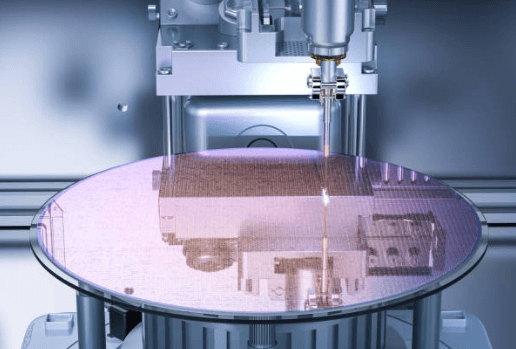
In the realm of semiconductor manufacturing, the importance of precise temperature control cannot be overstated. This is especially apparent in the dry etching process, where temperature management, particularly at the electrostatic chuck (ESC), plays a pivotal role. Our Semiconductor Industry Specialist, Thomas Fiaoni, delves into the technical nuances of temperature control and its significance for semiconductor engineers.
Dry Etching in Focus
Dry etching stands as a fundamental semiconductor manufacturing process responsible for shaping wafer features with pinpoint accuracy. During this procedure, wafers are subjected to plasma, which interacts with their surface, selectively removing material. The success of this sophisticated operation hinges on maintaining consistent and precise temperature conditions.
The Electrostatic Chuck (ESC) – A Key Player
Central to the dry etching process is the electrostatic chuck (ESC). The ESC serves as the platform upon which wafers are securely positioned during etching. Given the ESC’s direct contact with the wafer, it becomes evident why maintaining its temperature with precision is critical to the semiconductor industry.
Temperature Fluctuations: The Troublesome Variables
Temperature fluctuations at the ESC can significantly impact the etch rate in the chamber, a critical parameter that governs the uniformity of etched features on wafers. Inconsistent etch rates lead to changes in critical dimensions (CDs), a scenario engineers aim to avoid.
The Crucial Role of Chillers
Achieving precise temperature control at the ESC relies on advanced chiller systems designed specifically for the semiconductor industry. These chillers offer essential features:
- Swift Ramp Rates: Semiconductor processes necessitate rapid temperature transitions. High-performance chillers excel in delivering quick transitions, minimizing downtime and enhancing operational efficiency.
- Instantaneous Temperature Response: An agile chiller system can promptly adapt to required temperature changes, ensuring stability throughout the dry etching process.
The Benefits of Precise Temperature Control
- Enhanced Wafer-to-Wafer Uniformity: Consistent ESC temperature control guarantees identical conditions for each wafer, resulting in superior uniformity in the final product.
- Mitigated First Wafer Effect: The initial wafer in a batch often experiences varying conditions, leading to deviations in CD. Precise temperature control significantly mitigates this concern.
- Reduced Reliance on Pre-Lot Dummy Wafers: The use of dummy wafers to stabilize processes is resource-intensive. Effective temperature control diminishes the need for such practices, streamlining manufacturing operations.
In the semiconductor industry, precision remains the guiding principle. The dry etching process, a cornerstone of semiconductor manufacturing, relies heavily on the maintenance of stable ESC temperatures. High-performance chillers with swift ramp rates and instantaneous temperature response are instrumental in achieving this level of control. By ensuring consistent temperature conditions, engineers can enhance wafer-to-wafer uniformity, reduce the first wafer effect, and optimize semiconductor manufacturing processes.
